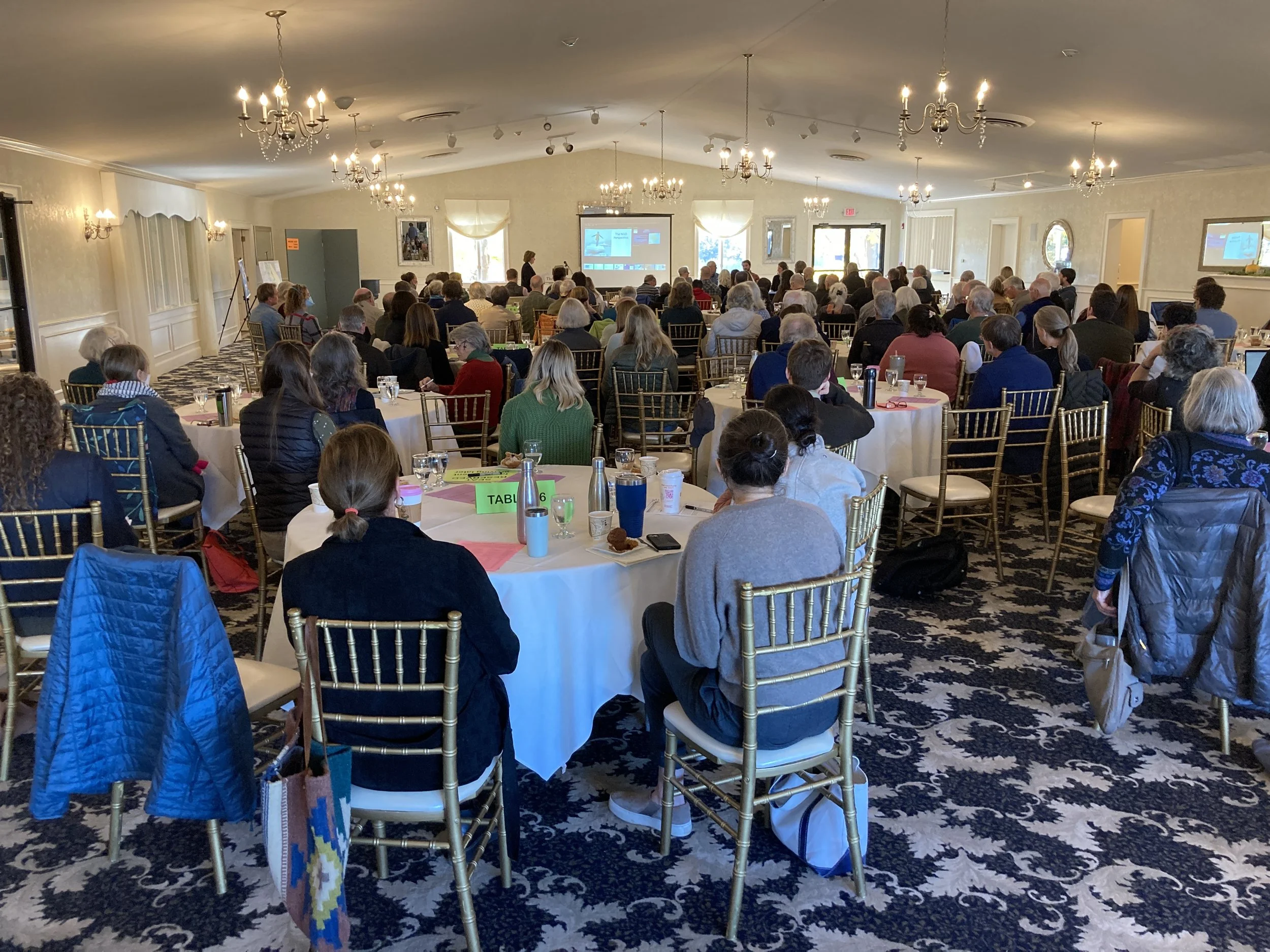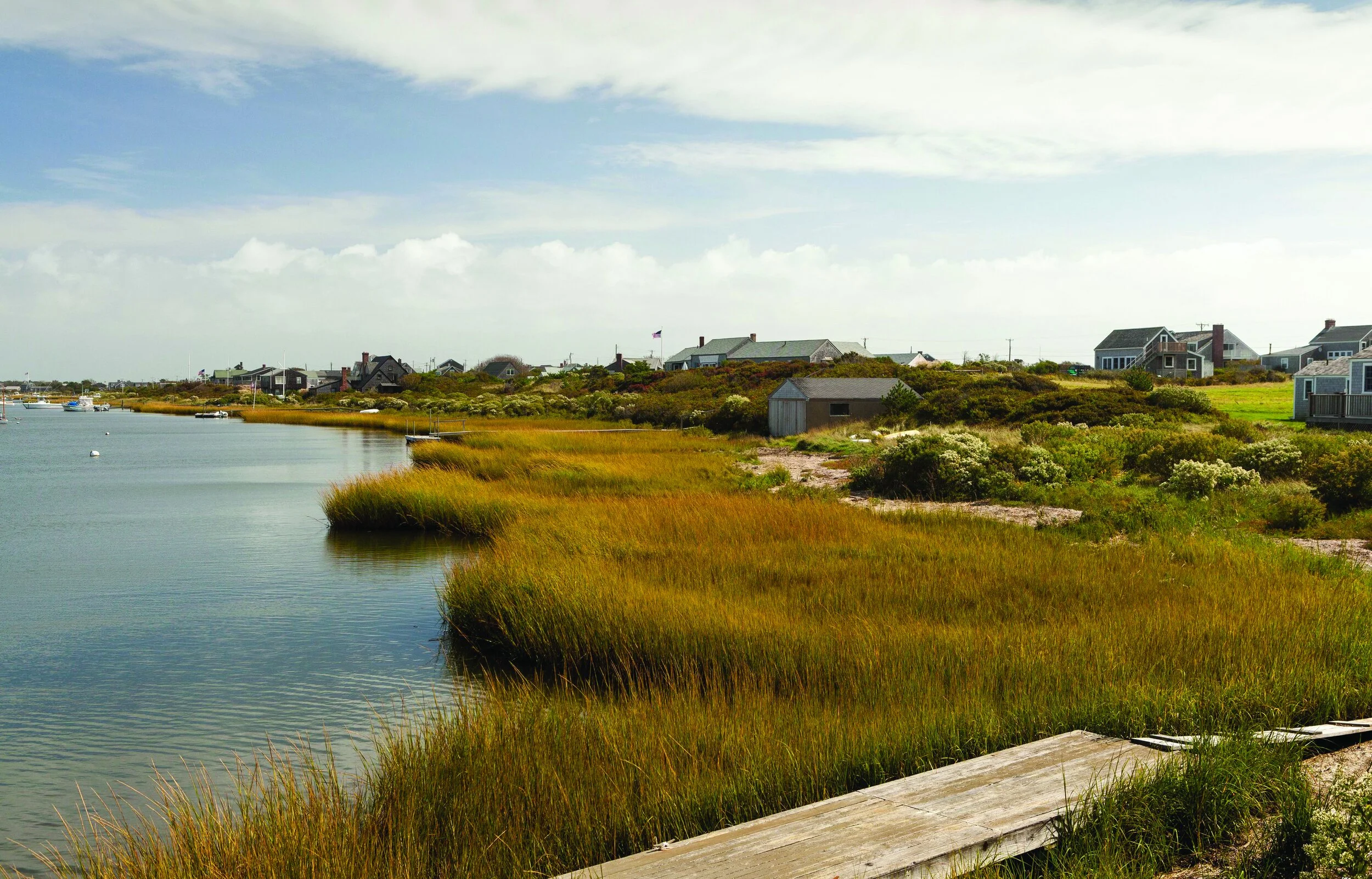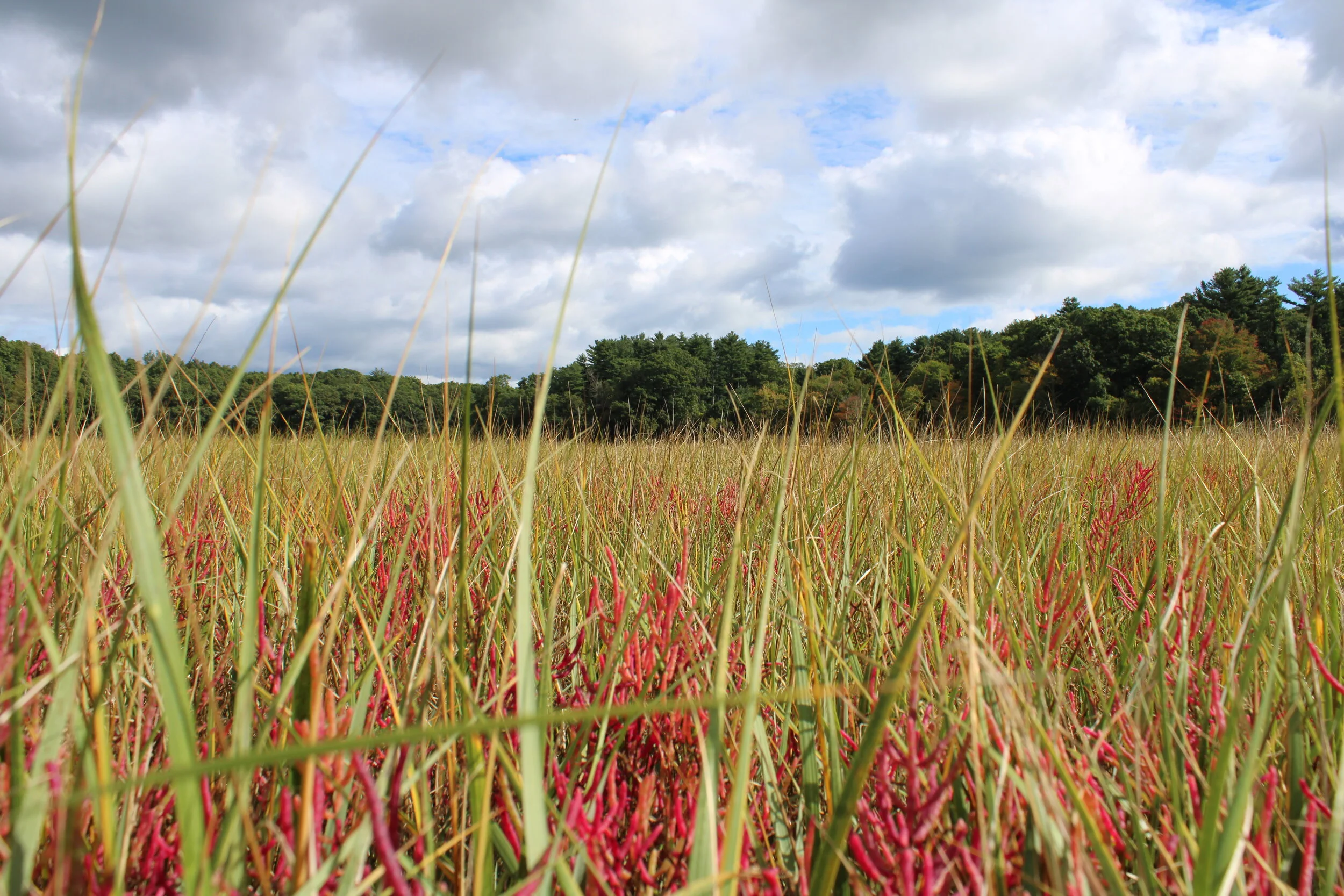Saving the Great Marsh: Ditch Remediation, Habitat Preservation and Resiliency Building at the Landscape Scale
Learn about the work underway to help “heal” acres of compromised salt marsh, starting at Old Town Hill in Newbury. Click here to explore the latest project updates and photos.
Ditches in the Great Marsh at Old Town Hill reservation, in Newbury.
The project
Over time historic ditching processes have compromised the resilience of the Great Marsh by destroying its natural draining process, leaving it increasingly vulnerable to floods. The Trustees and partners are working to fortify 1,274 acres of marsh in Newbury, Essex, and Ipswich using an innovative nature-based method of “ditch remediation.”
“This marks the first time a project of this type— using the ‘ditch remediation’ technique—has been permitted in Massachusetts,” says Russell Hopping, Trustees Lead Ecologist, Coastal Ecology. “There are many layers of permitting involved for our coastal wetlands and salt marsh, especially in an Area of Critical Environmental Concern (ACEC), and the current regulations provide very little wiggle room for new restoration methods given the importance of salt marsh. The regulators involved were very supportive and saw the merit in its implementation as a means of helping the marsh be more resilient to sea-level rise, a serious threat to our coastal marshes.”
This work is funded through several grants, including $1m from the North American Wetlands Conservation Act (NAWCA), a $217,931 National Coastal Resilience Fund grant from the National Fish and Wildlife Foundation (NFWF), NOAA, Shell and TransRe; $30,000 from the USFWS Partners for Fish and Wildlife Program; $80,000 in state grant funds through the Department of Fish and Game’s (DFG) Division of Ecological Restoration’s (DER) Priority Projects Program; and a $15,740 MassBays grant.
Flooding during an astronomical tide completely covers the marsh and encroaches upon Newman Road, at Old Town Hill in Newbury.
Focus on the Great Marsh
As the largest conservation nonprofit in Massachusetts with 27,000 acres under its care, including 37 coastal sites and 120 miles of managed waterfront, The Trustees recognizes the urgent need to bolster the resilience of its properties which are becoming increasingly vulnerable to the effects of our changing climate. As a result, the organization conducted an extensive coastal vulnerability assessment (CVA) in 2017 – the first of its kind by a statewide conservation nonprofit -- in partnership with Woods Hole Group to assess the vulnerability of its coastal sites to climate change impacts. The CVA identified coastal beaches and salt marshes as two of the most “at risk” natural areas.
Soon thereafter, The Trustees launched its “Saving the Great Marsh: Ditch Remediation, Habitat Preservation and Resiliency Building at the Landscape Scale,” project in the summer of 2018 with the first phase of funding awarded through a $15,740 MassBays grant that kick-started the restoration of 85 acres of salt marsh at Old Town Hill Reservation, in Newbury. The three to five-year restoration process will include a natural “healing” technique of harvesting salt hay from the marsh and loosely layering the hay within historically ditched areas. Over time, this technique will allow the hay to collect sediment from the incoming tides and rebuild marsh “peat” naturally to restore the health and natural function of the marsh.
“Salt marshes are on the ‘front lines’ of the coastal impacts from climate change,” says Tom O’Shea, Trustees Director of Coast and Natural Resources. “These funds uniquely allow us to not only protect and bolster the resilience of our salt marsh in its current location, but also to anticipate future shorelines and begin to protect and strengthen the ecology of those parcels as well. We are grateful for the support of our many partners.”
What is being restored?
Much of the Great Marsh ecosystem has been compromised due to widespread historic ditching, an agricultural practice dating back to early colonial days and up until the early 1900s when marsh hay farming was ultimately abandoned, allowing the marsh to flood as agricultural infrastructure fell into disrepair. During the Great Depression, vast re-ditching programs were launched to drain the marsh, in some cases for mosquito control in areas viewed as swampy, nuisance land.
By the late 1930s nearly 94% of New England salt marshes had been re-ditched, negatively altering the ecology of this important habitat. Today, the remnants of these ditches continue to disrupt natural tidal flow by not allowing for what should be natural draining, drowning the plants.
Brilliant waves of green high marsh hay stand out against gray morning fog over Newman Road and Old Town Hill in Newbury, a high marsh habitat (Photo courtesy Coco McCabe).
“This process ultimately damaged and compromised the natural flow and ecosystem in our marshes,” adds O’Shea. “Now, we are working on an innovative approach to reverse this degradation, using a technique that draws on the power of nature to heal itself to improve the overall health and resiliency of the salt marsh at a landscape scale.”
The project is initially estimated to take three to five years to complete, with the goal being to help the marsh keep pace with sea level rise so it can continue to serve as a buffer to adjacent uplands from storm surge and continue to provide habitat for species that rely on it for their livelihood. Questions? Comments? Email coast@thetrustees.org













